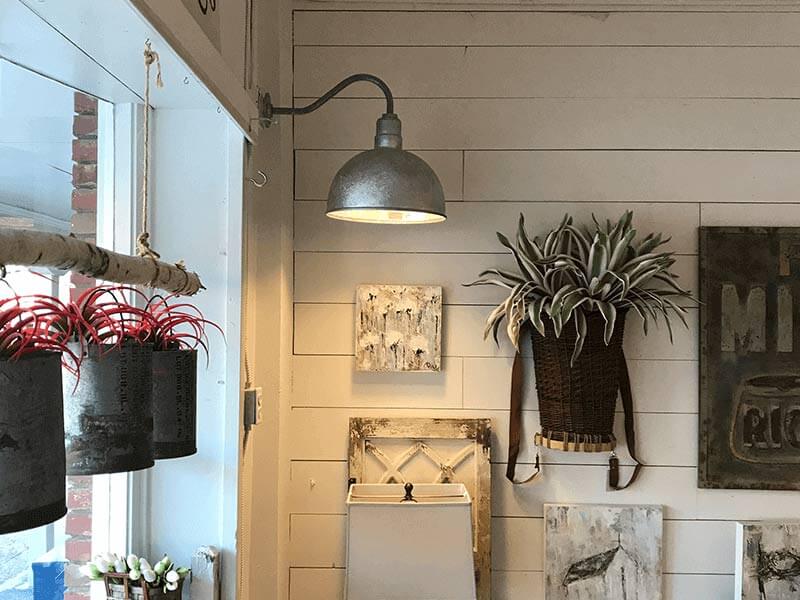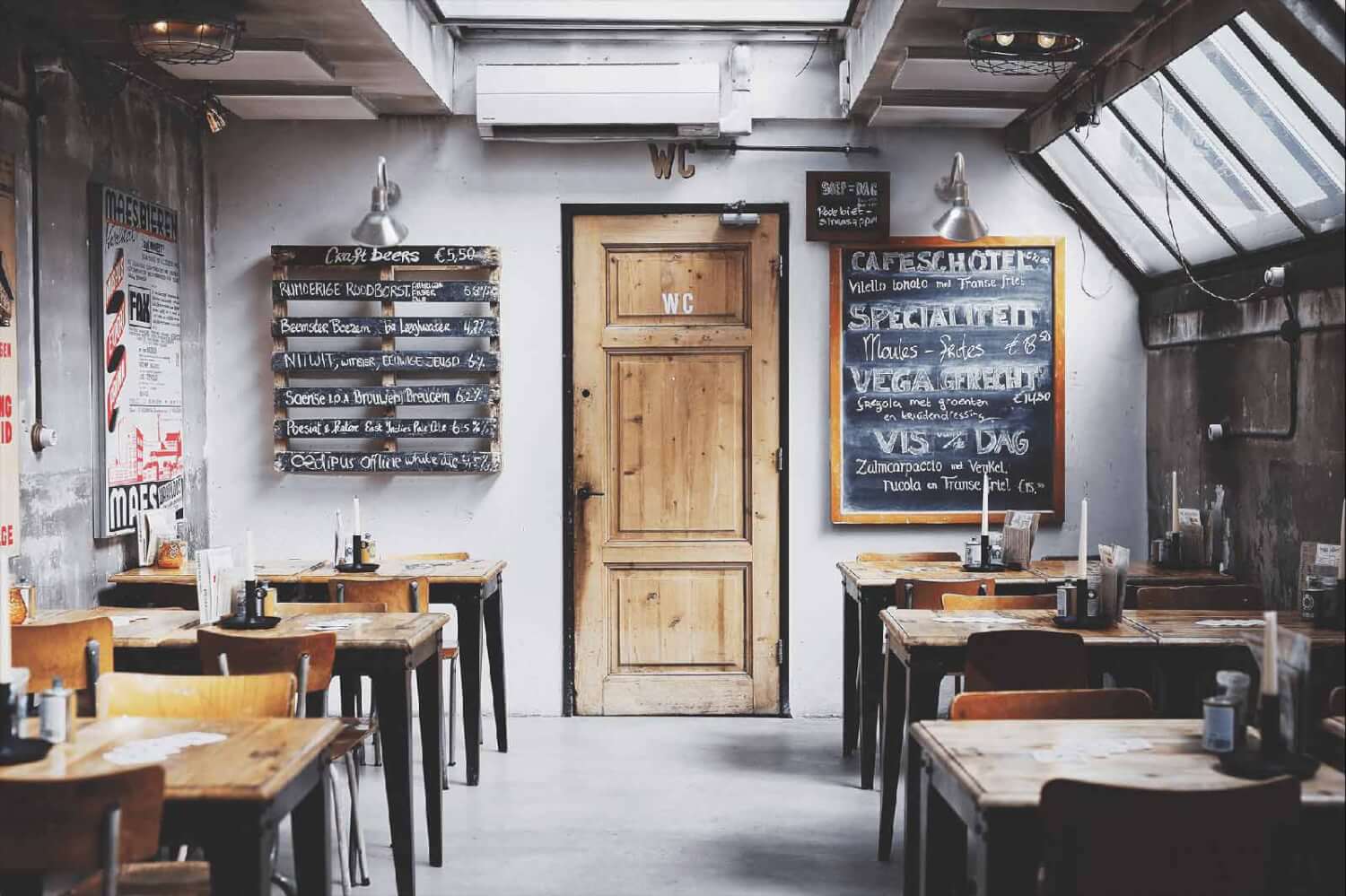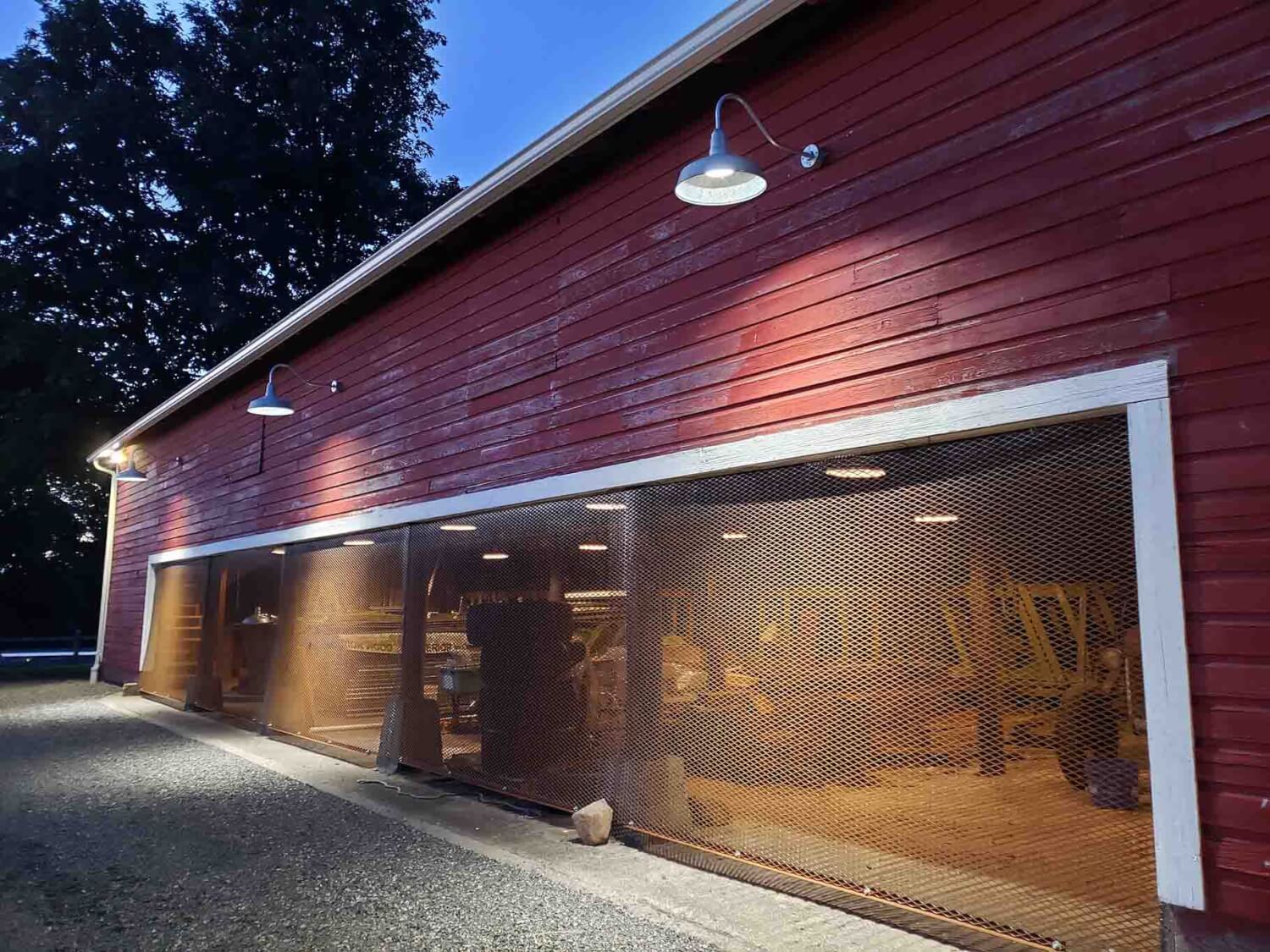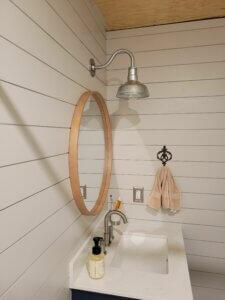Your cart is currently empty!
Using Steel Barn Lights to Brighten Dark Corners
Here at Steel Lighting Co., we have an option available to customers that allows them to coat their steel barn lights in something known as “Galvanized Steel.” To put it briefly, Galvanized Steel is a similar style of coating to powder-coating and even provides the same kind of benefits as what you would expect from powder-coating.
However, while powder-coating is based on bonding pigment to a steel surface, galvanized steel is a slightly more complex process involving a bonding metal that leaves a unique finish. In this blog, we will explore the fundamentals of Galvanized Steel and explain how this differs from traditional powder-coating techniques. In addition, we’re also going to explore how Galvanized Steel can be used in your home to achieve the perfect rustic or industrial effect.
What’s The Difference?
To start things off, let’s talk about the various benefits of Galvanized Steel; we’ll get to the nitty-gritty details a little later.
First off, Galvanized Steel is relatively cheap if you’re working to a particular scale. The longevity of the coating coupled with the low amount of maintenance required means that galvanized steel can save a considerable amount of cash. When compared to traditional paint, which can have similar upfront costs, Galvanized Steel is easily superior. Why? Because traditional paint methods take longer to apply and require vastly more maintenance over a fewer number of years.
We haven’t even gotten into the time saved as well. So if you’re a person who values their time, or the time of your employees, then Galvanized Steel has yet another feather in its cap for you to consider.
Much like powder-coating, the effect of galvanized steel is much simpler to achieve, meaning time spent on using the method is far less costly than traditional painting techniques. Having more time for yourself and your employees provides a range of benefits from being more financially viable for more minor operations and being much more environmentally friendly with a smaller amount of waste created from the process as a whole.
Trust The Process

Creating a Galvanized Steel finish works by applying a protective coating, usually zinc, to steel or iron to extend its durability. Zinc is a reliable and responsive material when exposed to moisture in the air and oxidizes reasonably quickly. While that may sound counterproductive, in actuality, this oxidized form of the zinc coating, known as zinc chromate, is highly durable. This increased durability allows the chromate to avoid the usual drawbacks associated with metal surfaces, such as rust and other forms of corrosion – making it an ideal coating for steel fixtures.
Zinc chromate is also remarkably tough as a physical coating as well. As a result, it is an excellent defense against scratches and dents. Even better, unlike traditional coating methods, galvanized steel can still stay resistant to the elements even when a small patch of the coating has been scratched off, as the highly reactive material will absorb moisture faster than the steel underneath.
The responsiveness of the chromate comes down to the chemical properties of Zinc itself, which, when surrounding a surface, can perform the task of coating as the particles of potentially hazardous elements can be fended off so long as the zinc remains electrically coupled.
How it Works
In the most ordinary circumstances, galvanized steel is created using a technique known as the “hot-dip” method.
Essentially, this is when the steel or iron piece you want to be coated is dipped into a giant pool of molten hot zinc. To be honest, that whole description of this technique sounds like the most metal sentence ever, as a side note. However, once the zinc is allowed to cool, you should have a wholly covered piece of steel or iron that’s ready to take on the world.
Of course, while wonderfully simple, the hot-dip methods can be insufficient against certain types of weather, like acid rain, for instance. This inconsistency comes down simply to the consistency of the coating and the ease at which acid rain can, with time, erode the thinner sections of the material.
As a tougher alternative, electroplating is usually the preferred method. This technique works by running an electric current through a material to create a metal coating. The material put on essentially acts as a cathode that then bonds itself to the desired metal. This bonding process creates an extra tough protective seal that naturally forms evenly on the surface you’re looking to protect, making it far tougher when compared to the hot-dip method.
Finally, a third method of creating galvanized steel is through a process known as Thermal diffusion or Shardizing. This process achieves the desired result by essentially tumbling Zinc powder in a large rotating drum that then diffuses the zinc onto the steel or iron. If this reminds you of a giant tumble dryer, you probably have a good idea of how this works.
As you’d expect, this method isn’t suited to large pieces of metal and so is mainly used for applying a galvanized layer to smaller parts such as bolts, nails, and more complex shapes.
Drawbacks
Ok, so while Galvanized Steel is pretty great, it’s not entirely without flaws. So, here are a few considerations to take into account if you’re looking to embrace the technique.
Primarily, this disadvantage comes in the form of potential chemical changes that can occur when applied to the wrong materials. As it stands, galvanized steel is best used for steel and iron due to their relatively low level of chemical activity between the two metals when exposed to electrified zinc.
However, other materials are not so lucky. For example, when mixed with brass, a chemical process known as dezincification can occur, which causes the brass to weaken and dissolve, causing a host of structural issues.
When exposed to copper, galvanized steel can completely negate itself and, in actuality, speed up the process of oxidization. As a result, galvanized steel is very dependant on the material you’ve chosen to apply it to.
For Farm & Barn

For lighting fixtures, Galvanized Steel can be a fantastic option for a variety of reasons. For example, if you’re looking to have a light prominently outdoors, such as a porch light or a garage light, then the galvanized steel coating will provide the perfect, low-maintenance option that’ll make a steel light harder than the nails you used to install it!
In terms of aesthetics, galvanized steel is no slouch either. The zinc chromate that forms creates a brilliantly textured metallic effect over the light that appeals to most industrial-styled buildings while also being welcome in more traditionally rustic settings. Just take a look at our selection of wall-mounted and ceiling-mounted lights to see for yourself what the galvanized steel option can do for your own set of steel lights.
If you’d like to know more about how galvanized steel can improve your steel lighting fixtures, then contact our friendly team at Steel Lighting Co., our friendly team of experts would be more than happy to give some advice and recommendations on what kind of steel barn light can best suit your needs.

